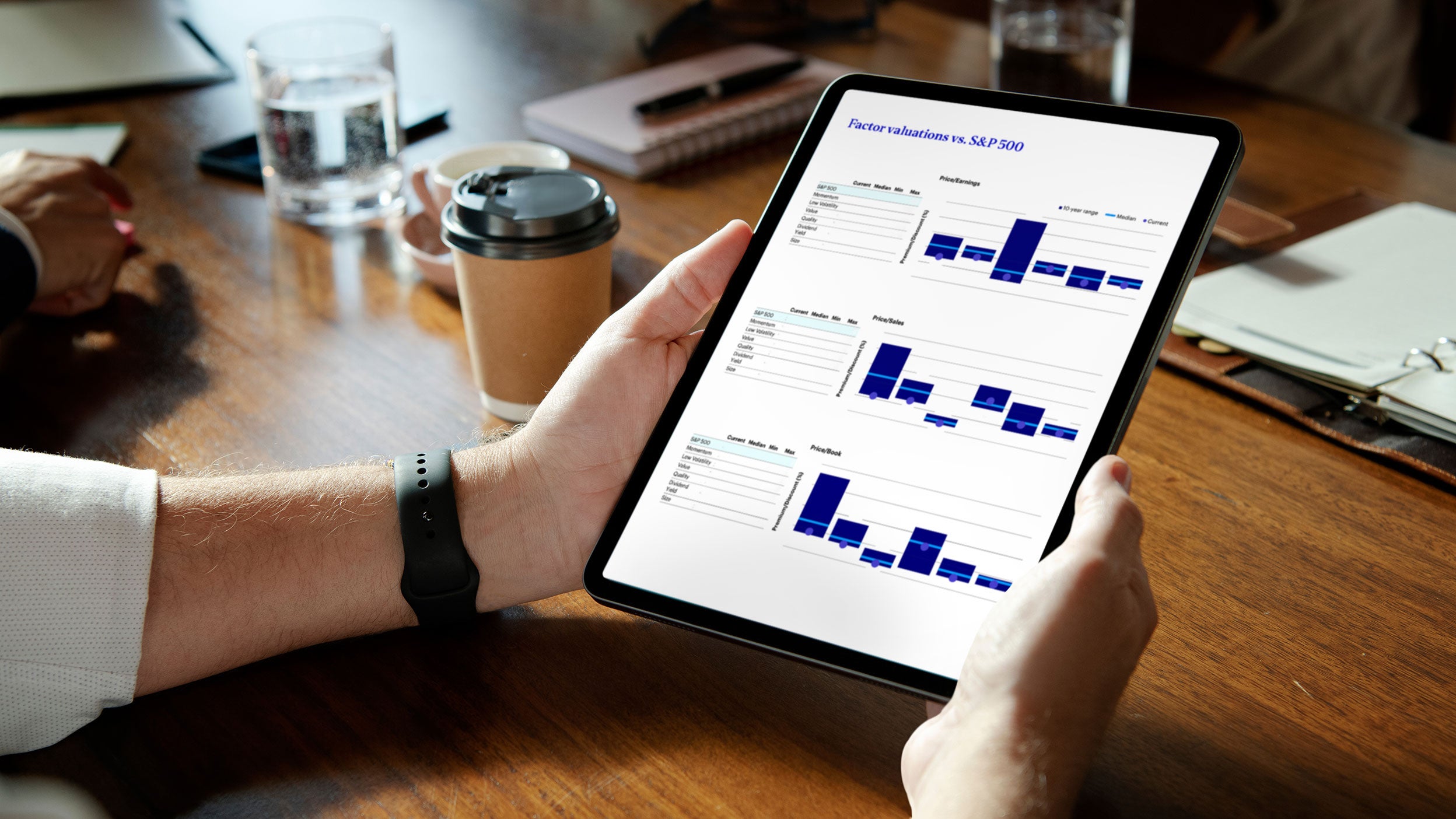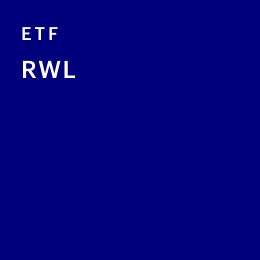
Why a revenue-weighted strategy may make sense now
Watch Senior Factor and Core Equity Strategist Chris Dahlin share why investors looking for an alternatively weighted strategy may want to consider RWL to help achieve their goals.
Transcript: Why a revenue-weighted strategy may make sense now
Speaker
Chris Dahlin, Factor & Core Equity Strategist, ETFs and Indexed Strategies
Until recently, several of the world’s largest companies were largely self-funding much of their growth initiatives using free cash flow generated from strong earnings growth and margin expansion. This conservative approach to the development of innovation was rewarded by investors seeking high-quality growth companies. Between January 2023 through October 2025, the S&P 500 Top 10 Index, comprised of market-cap weighting of just the 10 largest companies, nearly doubled the returns of the S&P 500 Index (46.1% vs. 24.3%). And as a result, the 10 largest US companies now represent approximately 42% of the entire S&P 500 Index.1
Shifting dynamics: Overstretched valuations? (on screen text)
However, recent dynamics have begun shifting. Growing enthusiasm for AI has catapulted many of these companies into a spending frenzy, with capital expenditures soaring to fuel the data centers and computing power needed for AI innovation. Such high spending needs have begun necessitating a shift from the previous internally funded investment approach to external financing instead. This surge in leveraged spending comes at a time when market leadership is increasingly concentrated among a few dominant firms, and with the S&P 500’s forward P/E ratio at 22.5 as of the end of October1 — its highest since the post-pandemic peak and close to dot-com-era levels — the risk of overstretched valuations looms large.
RWL, Invesco S&P 500 Revenue ETF (on screen text)
One potential solution for nervous investors is an alternatively weighted strategy that ties a company’s weight to a fundamental metric like revenue. RWL, the Invesco S&P 500 Revenue ETF, invests in all 500 stocks in the S&P 500, but, instead of assigning weights based on market cap, it weights holdings based on their proportional revenue contribution, subject to a 5% single stock cap at each rebalance. Revenue weighting can be a simple, effective tool to get broad market exposure at lower valuations and with less concentration. For example, the forward price-to-earnings ratio of RWL at the end of October was 16.3 (vs. 22.5 for the S&P 500 Index), and the top 10 companies accounted for 24.2% of RWL (versus 41.6% for the S&P 500 Index).1 At the same time, a broadening economic backdrop could create opportunities beyond the mega-cap names dominating today’s headlines, and RWL may provide a more balanced way to participate in that growth.
Important Information
1 Source: Bloomberg L.P., as of Oct. 31, 2025.
Free cash flow (FCF) is a measure of financial performance calculated as operating cash flow minus capital expenditures.
The forward P/E ratio (price-to-earnings ratio) is a valuation metric that compares a company’s current stock price to its estimated earnings per share (EPS) over the next 12 months or the next full fiscal year.
Not a Deposit | Not FDIC Insured | Not Guaranteed by the Bank | May Lose Value | Not Insured by any Federal Government Agency
Past performance is not a guarantee of future results. An investment cannot be made into an index.
This does not constitute a recommendation of any investment strategy or product for a particular investor. Investors should consult a financial professional before making any investment decisions.
The opinions expressed are those of Invesco, are based on current market conditions and are subject to change without notice. These opinions may differ from those of other Invesco investment professionals.
There are risks involved with investing in ETFs, including possible loss of money. Shares are not actively managed and are subject to risks similar to those of stocks, including those regarding short selling and margin maintenance requirements. Ordinary brokerage commissions apply. The Fund's return may not match the return of the Underlying Index. The Fund is subject to certain other risks. Please see the current prospectus for more information regarding the risks associated with an investment in the Fund.
Shares are not individually redeemable, and owners of the Shares may acquire those Shares from the Fund and tender those Shares for redemption to the Fund in Creation Unit aggregations only, typically consisting of 10,000, 20,000, 25,000, 50,000, 75,000, 80,000, 100,000, or 150,000 Shares.
Invesco Distributors, Inc. 11/25 NA5021438







